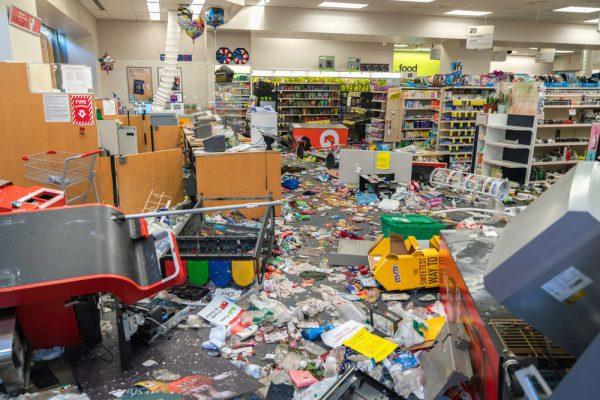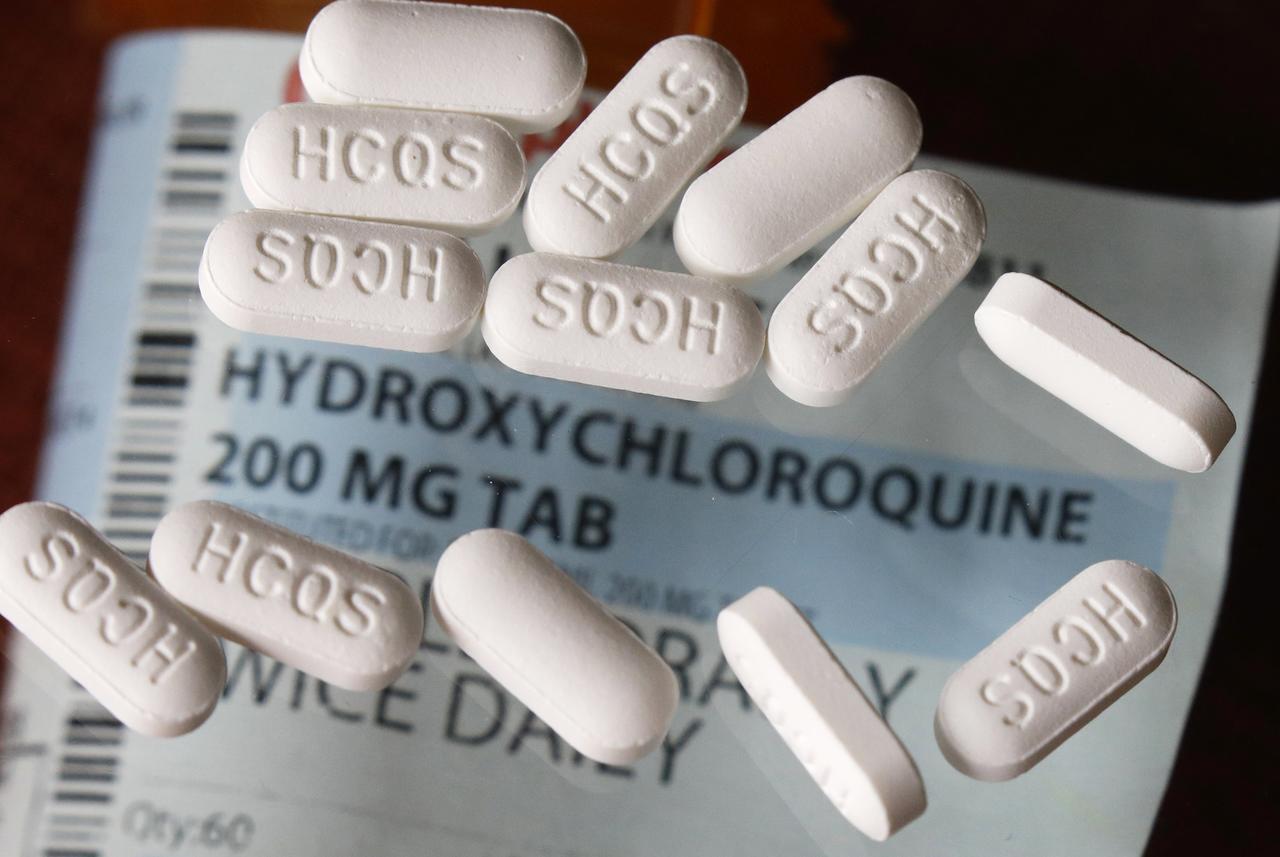Black Lives Matter (BLM) is a movement ostensibly seeking to reform police conduct especially as it involves use of force against African-American suspects and civilians. The movement has been criticized for appearing to tolerate violent demonstrations in its name,[1] for stoking racial tensions, [2] and for creating an unsafe environment for police.[3] Other critics say BLM pushes a left-wing extremist agenda under the false appearance of a moderate reformist movement.[4]
In 2014, “the movement gained significant traction after the fatal shooting of Michael Brown,”[5] becoming a “diverse and loosely-connected coalition”[6] of groups rooted in the rejection of police violence but each seeking to rectify their own perceived injustices.[7] In 2016, the “Movement for Black Lives,” a BLM umbrella organization, released a political platform which consisted of numerous far-left policy proposals, including socialized medicine, the immediate legalization of prostitution, the immediate pardon of all drug offenses with reparations paid to those convicted of drug offenses, and the restructuring of tax policy to create a “radical and sustainable redistribution of wealth.”[8]
BLM has been criticized for taking a see-no-evil approach to violence and extremism within and surrounding its ranks. While the movement’s lack of structure makes it extremely difficult to attribute bad acts to specific BLM groups, there are numerous incidents of BLM-associated persons[9] committing acts of violence and lawlessness, particularly violence against police.[10] This was most on display surrounding the 2016 murder of five Dallas police officers by a terrorist who claimed to support BLM.[11][12][13]
Liberal funders such as George Soros, Rob McKay, and other Democracy Alliance donors have given millions of dollars to groups associated with the movement, which have in total raked in over $133 million.[14]
CONTENTS
Founding
Black Lives Matter originated in 2013, following the trial of George Zimmerman, who was acquitted of murder on grounds of self-defense for killing Trayvon Martin, a 17-year-old African-American youth. Contesting the controversial verdict, left-wing author and labor organizer Alicia Garza coined the term “Black Lives Matter”[15] in protest. Activist and art college instructor Patrisse Cullors and Black Alliance for Just Immigration executive director Opal Tometi helped popularize the phrase as the social media hashtag “#BlackLivesMatter.”[16][17]
In 2014, “the movement gained significant traction after the fatal shooting of Michael Brown” by a police officer in Ferguson, Missouri.[18] Controversies surrounding Brown’s death and the authorities’ handling of the case are seen as “the national tipping point” that brought BLM to public consciousness.[19] After Brown’s death, “Dream Defenders, an organization co-founded by Working Families Party activist and Occupy Wall Street organizer Nelini Stamp, popularized the phrase “Hands Up – Don’t Shoot!” (referring to the apparently false claim that Brown had his hands up as if to surrender peacefully when he was shot[20]) which has since become BLM’s widely recognized slogan.”[21][22]
Organizational Overview
From the outset the originators of the BLM movement “made social media – and specifically the hashtag #BlackLivesMatter – a centerpiece of their strategy.[23] As a result, the growth of the movement offline was directly linked with the online conversation.”[24]
Currently there is a “contentious distinction” over what Black Lives Matter is.[25] “There are at least two versions of BLM. There’s the BLM network founded by the three black female activists who created the #BlackLivesMatter hashtag. Then there’s the BLM Movement, a more amorphous collection of racial justice groups.”[26]
Where the BLM Network is structured and has 34 chapters,[27] the BLM movement is decentralized and relies “almost solely on local, rather than national, leadership.” [28] The movement “eschews hierarchy and centralized leadership.”[29] According to one of the BLM originating activists, Patrisse Cullors, the movement’s “organizing is often spontaneous and not directed by one person or group of people.”[30]
The Black Lives Matter Movement’s collection of groups has come to take a variety of forms and political shapes, from groups that favor protest and have no intention of supporting candidates, to others that have begun lobbying candidates and elected officials on legislative issues, to others “hoping to use money to make a difference in elections.”[31]
Political Platform
In 2016, a coalition of over 50 organizations known as the Movement for Black Lives released a wide-reaching and in-depth platform detailing the coalition’s policy demands.[32][33][34] This platform was known as the “Vision 4 Black Lives” and laid out six far-left policy planks/demands pulled largely from the 1996[35] Black Panther Party ten-point program.[36][37]
The Atlantic criticized the extremist parts of the platform as “elements unpalatable to most major politicians and people,” such as extensive “reparations” that could “limit its potential to sway large audiences.”[38] The platform denounced the U.S. military, characterized Israel as an “apartheid state,” demanded extensive redistribution of financial resources, and insisted upon the socialization of broad sectors of the American economy.[39] It also demanded “special protections for trans, queer, and gender-nonconforming people … a call for free education for black people, and a proposal to implement black economic cooperatives.”[40]
The “Vision 4 Black Lives” platform was sharply criticized by the Jewish community[41] because the platform condemned the American alliance with Israel and claimed that the U.S., through this alliance, “is complicit in the genocide taking place against the Palestinian people.”[42] The platform “also drew criticism for its support of the Boycott, Divestment and Sanctions movement,” which seeks to economically isolate the Jewish state.[43]
Demonstrating the friction between the various black activist groups operating under the Black Lives Matter Movement’s banner, in August 2015, Campaign Zero put forth their own policy platform and notably did not sign the subsequent “Vision 4 Black Lives” platform.[44] Meanwhile, the agenda of the influential BLM group Black Youth Project 100 calls for many extremely leftist ideals such as reparations, a living wage, paid sick leave, a guaranteed living income regardless of employment, and a government-funded “baby bond” for all newborns.[45]
Criticisms
WORSENING RACE RELATIONS
Critics blame BLM for worsening race relations in America.[46] Even family members of Jamar Clark, who was shot by police in 2015, have urged BLM to settle the protests because “there’s a fine line between protesting a cause and hurting the community.”[47] One of BLM’s originating activists, Alicia Garza, has argued that black people cannot be racist, because “Racism is a system” rather than the act of merely judging people based on race. [48][49]
CREATING HOSTILE ENVIRONMENT FOR POLICE
Some commentators have argued that recent increases in crime and violence against police are the result of a so-called “Ferguson effect,” named for the city that saw the first large Black Lives Matter demonstrations after the death of Michael Brown in 2014.[50][51] In response to Federal Bureau of Investigation findings that homicides of police officers have risen since then, some observers identified Black Lives Matter protests as a contributing cause to an anti-police environment.[52]
The FBI released a report that found that 28 percent of those who used deadly force against police officers “were motivated by hatred of police and a desire to ‘kill law enforcement,’ in some cases fueled by social and political movements.”[53] The FBI reported that the perpetrators of attacks on police in Baton Rouge, Louisiana, and Dallas, Texas stated they were “influenced by the Black Lives Matter movement.”[54] The Dallas attack occurred at the end of a BLM protest “when a gunman who had a vendetta against white cops [killed] five and injured several other on-duty officers.”[55]
Adding to the concern that BLM encourages anti-police violence are statements by BLM endorsing historical extreme-left anti-police terrorists and those who enable them. On the death of Cuban Communist dictator Fidel Castro in 2016, the Black Lives Matter Network published a piece defending “El Comandante,” singling out the regime’s sheltering of fugitive convicted cop killer Assata Shakur (also known as Joanne Chesimard) and other violent black radical extremists for special praise.[56]
TACTICAL CRITICISMS
Black Lives Matter has faced numerous criticisms of its tactics, from both potential allies and adversaries. The movement’s focus on confrontation and its apparent see-no-evil approach to violence by its supporters have been extremely controversial.[57][58]
Barbara Reynolds, a veteran of the 1960s civil rights movement and an author, writes that many civil rights activists agree with BLM’s goals but “fundamentally disagree with their approach.” According to Reynolds, BLM uses “confrontational and divisive tactics” marked by boorish rhetoric and profanity, and rejects proven protest methods, which make it “difficult to distinguish legitimate activists from the mob actors who burn and loot.” Reynolds argues that while 1960s-era civil rights activists used “loving” and “nonviolent” means to win allies and mollify enemies, the BLM Movement uses “rage and anger.”[59]
Reynolds argues that while “the civil rights movement valued all human lives, even those of people who worked against us,” BLM focuses too narrowly on “black pain and suffering,” shouting down “those who dare to utter ‘all lives matter.’” She argued that in order to “win broader appeal [the BLM Movement] must work harder to acknowledge the humanity in the lives of others.” [60]
Black Lives Matter operations have been largely known for their extremism. Daunasia Yancey, a Black Lives Matter activist says, “We’re a radical organization, with radical politics, and we have radical tactics. There’s no way of softening that.”[61] BLM marches in Baltimore,[62] Atlanta, Miami,[63] Los Angeles,[64] and Oakland took over interstates, forcing those cities to shut down roads.[65] Numerous BLM demonstrators were arrested for chaining themselves to subway trains in San Francisco, to the irritation of otherwise-sympathetic locals.[66]
The BLM Movement has also received wide coverage of its protestors interrupting and agitating 2016 Presidential candidates Hilary Clinton,[67] Bernie Sanders,[68] and Donald Trump.[69] BLM originator Patrisse Cullors said the reasoning behind the protests of the Democratic Party is that the Democrats have “milked the Black vote while creating policies that completely decimate Black communities.”[70] Critics argue that Black Lives Matter “has become a movement about instilling fear — sometimes in politicians, sometimes in ‘white people,’ but mainly and most significantly in police.”[71]
Funding
The BLM Movement founders have connections to large “radical Left organizations.”[72] The connection to the Left has provided the BLM Movement with two “big bets” needed to have an influential social movement.
It is estimated that groups associated with the BLM Movement have taken in $133 million since 2013. Organizations associated with liberal billionaire George Soros are said to have provided at least $33 million to various BLM movement groups since 2016.[73]
In 2015, the fundraising club Democracy Alliance, led by liberal donors like George Soros and Taco Bell heir Rob McKay, recommended “its donors step up check writing to a handful of endorsed groups that have supported the Black Lives Matter movement.” [74] BLM Movement groups which received support from the Democracy Alliance were the Black Youth Project 100, the Center for Popular Democracy, the Black Civic Engagement Fund, Color of Change and the Advancement Project.[75]
Additionally, the Ford Foundation and the Borealis Philanthropy created the Black-led Movement Fund,[76] a funding vehicle for the Movement for Black Lives, the coalition of groups responsible for the extremist “Vision 4 Black Lives.”[77] The fund has received “pledges of more than 100 million dollars from liberal foundations and others eager to contribute.”[78]

